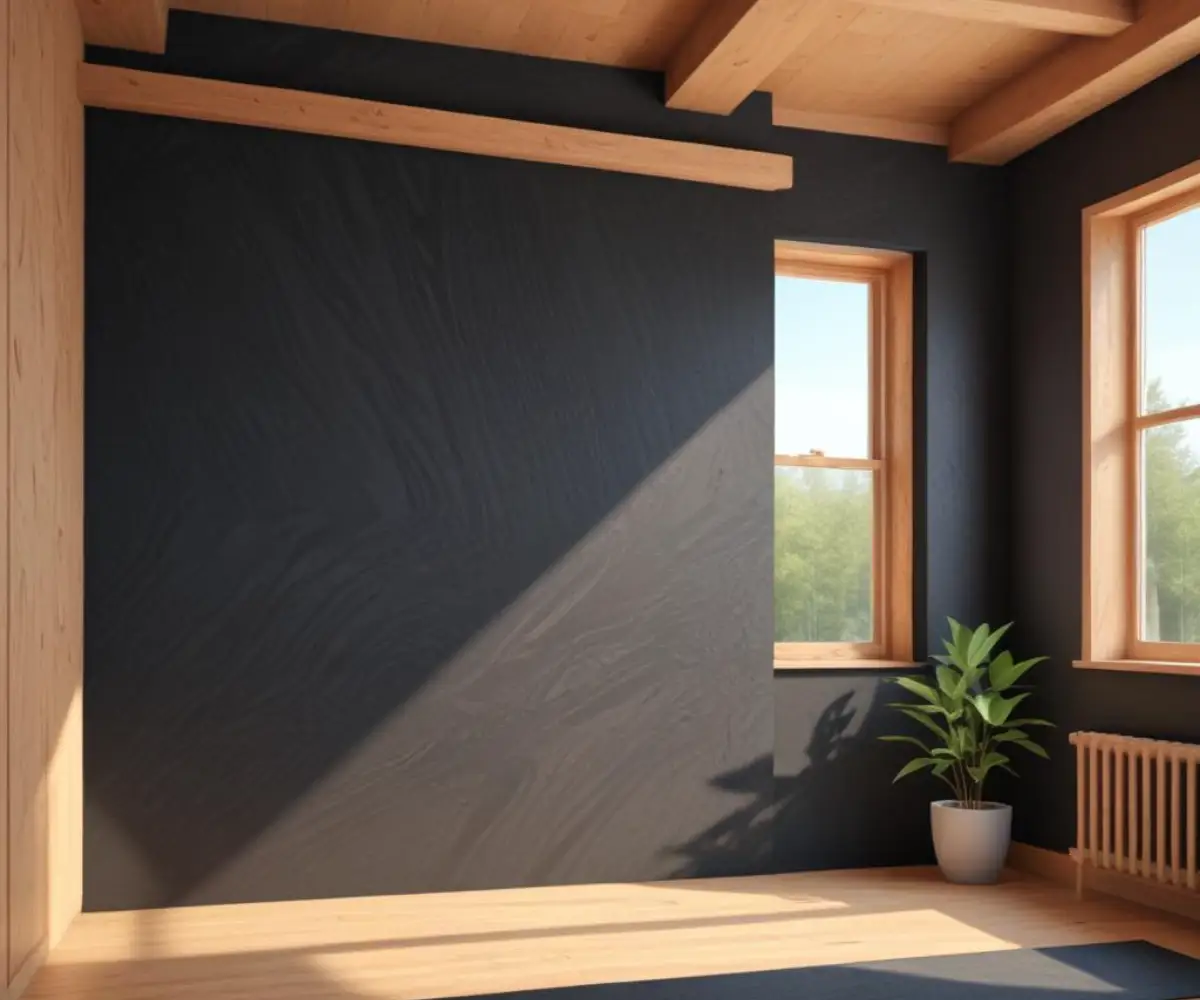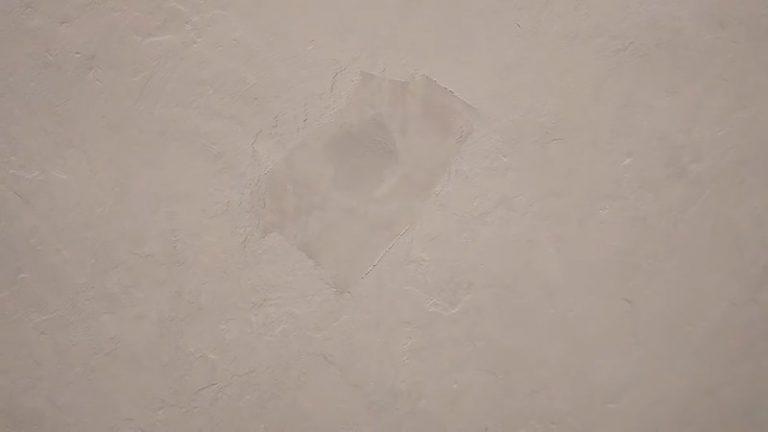Tar Paper on Interior Walls: A Dangerous DIY Mistake to Avoid
You’re renovating a room, perhaps peeling back layers of old drywall or paneling, and you uncover something unexpected: black, asphalt-laden paper lining the wall cavity. Or maybe you’re searching for a cheap solution for soundproofing or moisture control and the idea of using roofing tar paper on your interior walls comes to mind. In either scenario, hitting the brakes is the most important thing you can do.
Using tar paper inside your home is a practice rooted in outdated building methods and modern misconceptions. While it was once a common material, today we understand the significant risks and superior alternatives available. This guide will walk you through the serious problems tar paper can cause inside your walls and steer you toward modern, safe, and effective solutions for a healthy home.
You'll Learn About
What Exactly Is Tar Paper?
Tar paper, also known as asphalt-saturated felt, is a heavy-duty paper product impregnated with asphalt or bitumen to make it water-resistant. Historically, it was made from cotton rags, but modern versions often use fiberglass or other synthetic materials as a base. It has been used for centuries, primarily as an underlayment for roofing and a weather-resistive barrier on exterior walls, placed behind the siding.
Its primary historical function on walls was to provide a basic defense against wind and bulk water intrusion in homes that were far from airtight. Before the advent of modern building science and materials like house wrap, tar paper was the go-to solution. However, its properties make it fundamentally unsuitable and dangerous for interior applications in a modern home.
The Alarming Reasons to Keep Tar Paper Out of Your Walls
Applying tar paper to the interior side of your wall assembly is not just a bad idea—it can be a dangerous one. Modern homes are built to be much tighter and more insulated than their historical counterparts, which changes how moisture and air behave within the walls. Introducing a material like tar paper into this environment can lead to a cascade of problems.
The Hidden Health Hazard: VOCs and Odor
The most immediate and concerning issue with using tar paper indoors is the off-gassing of Volatile Organic Compounds (VOCs). The asphalt used to saturate the paper contains numerous chemicals that can be released into your living space, especially when warmed by sunlight or indoor heating. These emissions are responsible for the distinct “tar” or asphalt smell that many homeowners notice on hot days when this material is present.
Prolonged exposure to these VOCs can contribute to poor indoor air quality, potentially leading to headaches, respiratory irritation, and other health concerns. Construction materials containing tar products have been identified as significant sources of indoor air pollution. A healthy home starts with clean air, and lining your walls with an asphalt-based product is a step in the wrong direction.
A Fire-Lover’s Nightmare: Asphalt and Flammability
Another critical risk is fire safety. Tar paper is, by its very nature, a petroleum-based product. The asphalt impregnation makes it flammable. Placing this material inside your wall cavities, next to wood studs, insulation, and electrical wiring, introduces an unnecessary fire hazard into your home. Should a fire start within the wall, the tar paper could act as an accelerant, contributing to faster flame spread and releasing thick, toxic smoke.
Modern building codes have stringent requirements for the flame spread and smoke-development ratings of interior finishes for this very reason. Tar paper is not designed or tested for this application and fails to meet the safety standards required for materials concealed within your home’s structure.
The Moisture Trap: Why It Causes Mold and Rot
Perhaps the most misunderstood aspect of tar paper is its interaction with moisture. While it is water-resistant, it is not a true vapor barrier. More importantly, its ability to manage moisture is highly dependent on its placement in the wall assembly and the climate. When placed on the interior (“warm side”) of an insulated wall in a cold climate, it can create a catastrophic moisture trap.
Warm, moist air from inside your home will try to move through the wall to the colder, drier outside air. The tar paper can be just permeable enough to let some vapor through but not permeable enough to let it dry out effectively once it condenses on the cold exterior sheathing. This creates a “vapor barrier sandwich,” trapping moisture within the wall cavity, soaking insulation, and creating the perfect environment for mold, mildew, and wood rot. This is especially true in basements, where creating a dead air pocket with tar paper can prevent walls from drying properly.

Debunking the Myth: Tar Paper for Soundproofing
A common misconception is that tar paper can be used as a cheap soundproofing material. The reasoning seems plausible: it’s dense, so it should block sound. However, this is a misunderstanding of how soundproofing works. Effective soundproofing relies on a combination of mass, decoupling, absorption, and damping.
While tar paper has some mass, it is far too thin and lightweight to make a significant difference in blocking airborne noise like voices or music. True soundproofing solutions involve much heavier materials like mass-loaded vinyl (MLV), constructing decoupled walls (e.g., with a double stud wall or resilient channels), or adding dense insulation. Relying on tar paper for noise reduction will lead to disappointing results and introduce the health and safety risks already discussed.
The Right Way: Modern Solutions for Wall Performance
Instead of turning to an outdated and hazardous material, you should use modern building products specifically designed for interior wall assemblies. The right choice depends on your goal, whether it’s controlling moisture, stopping air leaks, or soundproofing.
Choosing the Correct Vapor Barrier for Your Climate
Managing water vapor is crucial for a durable, healthy wall. The type and placement of a vapor barrier (or vapor retarder) depend entirely on your climate zone. The goal is to prevent moisture from condensing inside your wall.
- Cold Climates: In places with cold winters, the vapor barrier should be installed on the warm-in-winter side, just behind the drywall. A 6-mil polyethylene plastic sheeting is a common and effective choice for a true vapor barrier.
- Mixed or Hot/Humid Climates: In these climates, a “smart” vapor retarder is often the best choice. These materials change their permeability based on humidity, allowing the wall to dry in either direction as conditions change.
- Hot/Dry Climates: Often, no interior vapor barrier is needed. The focus is on preventing moisture from getting in from the outside.
Using the wrong product or placing it incorrectly can cause more harm than good, so always consult local building codes for requirements in your area.
Superior Air Control with Sealing
Most moisture problems in walls are caused not by vapor diffusion but by air leaks carrying moisture-laden air into the wall cavity. An effective air barrier is therefore more critical than a perfect vapor barrier. Meticulously sealing all penetrations in your drywall—such as around electrical outlets, plumbing pipes, and window frames—with caulk or spray foam is one of the most effective things you can do to protect your walls.
Real Solutions for Soundproofing Interior Walls
If your goal is to reduce noise transmission, focus on proven soundproofing strategies:
- Add Mass: Use a second layer of drywall. A product like 5/8″ fire-rated drywall is heavier and more effective than standard 1/2″ board.
- Damping: Apply a damping compound like Green Glue between the two layers of drywall. This converts sound energy into heat, effectively deadening vibrations.
- Decoupling: Use resilient channels or isolation clips to attach the drywall to the studs. This breaks the physical connection, making it harder for sound vibrations to travel through the structure.
- Absorption: Fill the wall cavity with dense insulation designed for sound absorption, such as mineral wool (Rockwool) or fiberglass batts.
| Solution | Primary Function | Health Risk | Performance | Best Use Case |
|---|---|---|---|---|
| Tar Paper | Water Resistance (Exterior) | High (VOCs, Flammable) | Poor (Traps moisture) | Not recommended for interiors |
| Polyethylene Sheeting | Vapor Barrier | Low | Excellent (When properly placed) | Cold climate interior vapor control |
| Smart Vapor Retarder | Variable Vapor Control | Low | Excellent (Allows drying) | Mixed and humid climates |
| Mass Loaded Vinyl (MLV) | Soundproofing (Mass) | Low | Excellent (High density) | Adding mass to block sound |
| Acoustic Insulation | Soundproofing (Absorption) | Low | Good (Reduces echo/reverberation) | Filling stud cavities for sound |
Discovered Tar Paper in Your Old House? Here’s What to Do
If you’ve uncovered tar paper inside the walls during a renovation, you’re facing a common scenario in older homes. The decision of what to do next depends on the scope of your project and the condition of the material.
To Remove or Not to Remove? A Critical Decision
In a major remodel where the wall cavity is fully exposed, the best course of action is to remove the tar paper. This eliminates the source of potential VOCs and odors and allows you to properly insulate and install a modern, climate-appropriate air and vapor control layer. This is your chance to correct an old construction method and bring your home up to modern performance and safety standards.
If the tar paper is only partially exposed or you’re not doing a full gut renovation, removal might be impractical. Be aware that tearing it can be a messy job and may release more odors and particulates into the air. If you choose to leave it, ensure the wall cavity remains well-ventilated during work and consider the encapsulation option below.
Encapsulation as a Safer Alternative
If removal is not feasible, you can effectively entomb the tar paper. By installing a proper air barrier (e.g., meticulously sealed drywall) and a smart vapor retarder over it, you can largely seal off the tar paper from your interior living space. This will limit its ability to off-gas into your home. However, this does not remove the fire hazard within the wall, so removal remains the superior option if possible.
Finishing Your Walls the Right Way
Once your wall assembly is correctly built without hazardous materials like tar paper, you can focus on the final surface. The choice of finish will determine the look and feel of your room. Many homeowners debate whether to skim coat vs sheetrock to achieve the smoothest possible surface. A skim coat can rescue older, damaged plaster, while new sheetrock provides a pristine canvas.
For walls that require a more robust and traditional finish, especially in older homes, a high-quality plaster product is an excellent choice. Learning about materials like Thistle Multi Finish can help you achieve a durable, high-end look. Remember that a beautiful finish is only as good as the properly constructed wall beneath it.
Even a large-scale renovation involves tackling other cosmetic updates. You might find yourself wanting to modernize window treatments, and knowing how to remove plantation shutters without damaging your newly finished walls is a valuable skill to have during the final stages of your project.
Conclusion: Build Safe, Build Smart
The bottom line is clear: tar paper has no place on the interior of your walls. The risks associated with off-gassing, fire, and moisture damage far outweigh any perceived benefits. Its historical role as an exterior weather barrier has been surpassed by modern materials, and its use for interior applications is based on dangerous myths and outdated practices.
Whether you are building new or renovating an old home, prioritize your health, safety, and the long-term durability of your house. Choose materials specifically designed for the job—proper vapor barriers for moisture control and proven soundproofing assemblies for noise reduction. By building with modern knowledge and materials, you ensure your walls not only look great but also contribute to a safe, healthy, and comfortable living environment for years to come.

